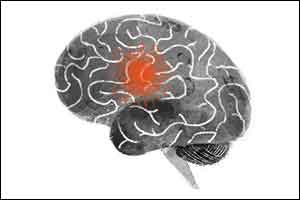- Home
- Editorial
- News
- Practice Guidelines
- Anesthesiology Guidelines
- Cancer Guidelines
- Cardiac Sciences Guidelines
- Critical Care Guidelines
- Dentistry Guidelines
- Dermatology Guidelines
- Diabetes and Endo Guidelines
- Diagnostics Guidelines
- ENT Guidelines
- Featured Practice Guidelines
- Gastroenterology Guidelines
- Geriatrics Guidelines
- Medicine Guidelines
- Nephrology Guidelines
- Neurosciences Guidelines
- Obs and Gynae Guidelines
- Ophthalmology Guidelines
- Orthopaedics Guidelines
- Paediatrics Guidelines
- Psychiatry Guidelines
- Pulmonology Guidelines
- Radiology Guidelines
- Surgery Guidelines
- Urology Guidelines
A Simple test which recognises posterior stroke

In a new study, researchers compared the recognition of posterior strokes between EMTs who received standard training in stroke screening with EMTs who received standard training plus in-person training in the "finger-to-nose test." In this simple coordination test the patient alternates touching their own nose and the examiner's finger. Performance can be impaired in posterior stroke.This test by medical professionals almost doubled the recognition of possible stroke involving the circulation at the back of the brain.This research was presented in American Stroke Association's International Stroke Conference 2018.
Posterior strokes represent up to a quarter of all stroke admissions to the hospital, but there are often delays in diagnosis because the patients may not have the typical stroke signs included in screening tools used by emergency medical technicians (EMTs).
The researchers found:
- After training including the finger-to-nose test, EMTs recognized 12 of 16 (75 percent) posterior strokes, compared with 9 of 26 (38 percent) in the 12 months prior to training.
- After routine training (not including the finger-to-nose test), EMTs recognized 13 of 28 (46 percent) posterior strokes, compared with 10 of 36 (28 percent) in the 12 months prior to training, an improvement that was not statistically significant.

Disclaimer: This site is primarily intended for healthcare professionals. Any content/information on this website does not replace the advice of medical and/or health professionals and should not be construed as medical/diagnostic advice/endorsement or prescription. Use of this site is subject to our terms of use, privacy policy, advertisement policy. © 2020 Minerva Medical Treatment Pvt Ltd